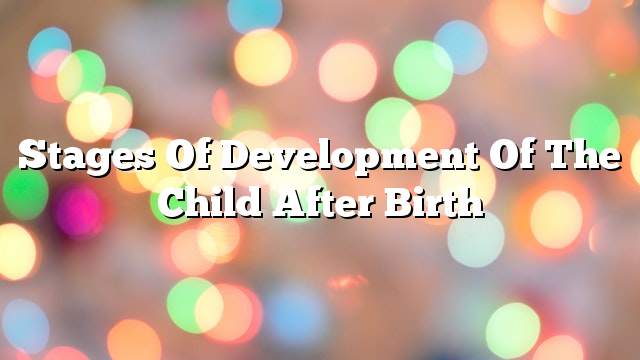Childhood
During the early childhood, the child begins to interact with the surrounding environment. His or her skills begin to develop and the child begins to respond to and adapt to the environment. There may be differences in the development of children in the early stages of life, due to individual differences Among children.
Stages of children’s development
- early childhood: At this stage the child spends most of his time asleep, and at this stage the child can hold the mother’s fingers, and the child smiles but without realizing.
- first month: The child grows quickly at this stage, and can raise his head and move left and right, and the child can focus on things and stare at them, and sounds sounds stimulant for the child and attention to the source of sound, and some children grab their hands strongly during sleep, and put their fingers in their mouth, Stage, and begins to cry when feeling hungry, and must adjust the positions of the child’s head from time to time.
- second month: At this stage, the child begins to laugh. This makes the mothers happy, the relationship between the mother and the child is strengthened, and the child sleeps better at night.
- the third mounth: The child’s interaction with his surroundings develops more at this stage. He begins kicking and shaking hands in response to the movements of the mother. The child’s individual personality begins to appear. The child’s voluntary ability develops. The hands and eyes move more evenly. The child tries to touch objects. , And the child can suckle and watch things around him, and can make bubbles in his mouth and be the beginning of the development of speech in the child, and the parents at this stage to regulate the habits of the child in terms of times of food, play, and the position of sleep.
- Fourth month: He can sleep more hours during sleep, wake up more during the day, stretch out his hand to handle things, and the head can remain in a steady position. He can lift his body up on his hands and strengthen his back muscles. And the neck at this stage, and double the weight at this stage, and the best position for the child to keep lying on his back and play the child with his body at this stage and trying to experiment and discovery by placing things in the mouth, and the child can at this stage to know his parents.
- the fifth month: The child’s speed of gaining weight at this stage is reduced. The child can sit with a simple attribution. The hand and eye movements are more consistent, respond better to the sounds and show more emotion to the sounds. The mother can develop the child’s emotions by listening to the quiet music. At this stage, the child can be trained to speak and produce sounds, and the child becomes more self-confident and feels the mother’s tenderness.
- The sixth month: The baby begins to cry, he can sit alone, the teeth begin to appear, he can hold the moving objects with his hands, and his mother becomes more attached to him at this stage.
- the seventh month: At this point, children should be more concerned because they want to discover the surrounding environment, be able to recognize the faces, and can call the word mama and papa, and can distinguish the praise of the parents or rejection of a certain behavior at this stage.
- 8th month of child’s life: He can climb up and down the stairs, and he can stand up.
- From the ninth month until the year: Show more teeth, utter more words, and become able to walk.
